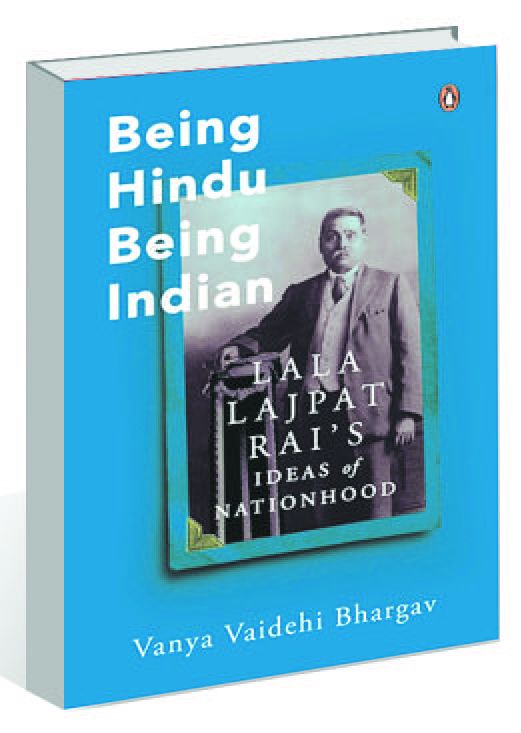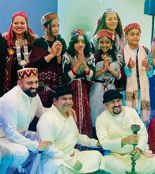Being Hindu, Being Indian: Lala Lajpat Rai’s Idea of Nationhood by Vanya Vaidehi Bhargav. Penguin Random House. Pages 748. Rs 1,299
Book Title: Being Hindu, Being Indian: Lala Lajpat Rai’s Idea of Nationhood
Author: Vanya Vaidehi Bhargav
Salil Misra
Lala Lajpat Rai, the doyen of India’s freedom struggle, had many lives. One was his actual lived life which ended tragically in 1928, when he was struck down by a lathi blow of a policeman, while protesting against the Simon Commission. His other lives were constructed by scholars and commentators subsequently. In the constructed accounts, his being a Hindu, a Punjabi, leader of minorities in Punjab, being a tall nationalist leader, being a member of the Congress and the Hindu Mahasabha at the same time, became some of the building blocks in the narrations of his life. Quite unsurprisingly, the lived life and the constructed lives did not always converge. For a very long time, historians dubbed him as a communalist who oscillated between communalism and nationalism, recommended a division of Punjab on religious basis and generally promoted Hindu-Muslim separation in politics.
Lajpat Rai was an extremely complex personality whose politics could not be reduced to neat labels. The book makes a plea for retaining the sense of complexity while trying to make sense of him
In popular imagination, he was still remembered as the great patriot who sacrificed his life for a nationalist cause. But professional historical writing kept projecting him as a partly communal, partly nationalist leader of the freedom struggle. Over time, this became a kind of orthodoxy on Lajpat Rai. Of late, there have been some notable efforts to correct this simplistic picture and portray him as he ought to be portrayed, without compromising on the complexities in his political life. Vanya Vaidehi Bhargav’s book is a laudable effort in this direction. It puts Lajpat Rai in perspective and liberates his image from a simple nationalist-communalist binary.
Lajpat Rai was born and brought up in Punjab and his initial socialisation was enmeshed with cultural influences from Hinduism, Sikhism and Islam. As a youngster, he was opposed to the separatist orientation of Sir Syed Ahmed Khan of the Aligarh movement. He opposed Sir Syed from a nationalist vantage point. He supported the pact between the Congress and the Muslim League in 1916 on the ground that it would pave the way for a political unity of Hindus and Muslims. He was also the first president of the All India Trade Union Congress (AITUC), the first representative body of India’s industrial workers. Lajpat Rai also supported the Khilafat movement under the belief that it would cement national unity. He sacrificed his life while protesting against the Simon Commission, constituted by the British to deliberate on a proposed Constitution for India. Lajpat Rai was protesting against the fact that the Simon Commission did not include any Indian. With such an impeccable nationalist record, why was it that he was saddled with the image of a communalist or a semi-communalist? The book, while cautioning us against a simplistic portrayal of Lajpat Rai, provides the answer to this question.
It is important to remember that Hindus were a national majority but a regional minority in Punjab. Many decisions taken by the British and their loyalist supporters affected them adversely. They also entertained the fear of a cultural domination by Muslims. These urban Hindus of Punjab — traders, shopkeepers, small entrepreneurs, moneylenders, drawn mainly from the Khatri, Arora and Bania caste groups — looked to Lajpat Rai for leadership and inspiration. His main task was not just to represent them but also prevent them from going over to Hindu communal organisations quite active in Punjab. Moreover, Lajpat Rai practised a version of Indian nationalism in which the Indian nation was imagined as a federation of religious communities. This was primarily a 19th-century idea which persisted in the 20th century as well. Lajpat Rai obviously saw no contradiction between espousing the cause of Indian nationalism in its struggle against the British rule, and taking up specific issues of the Hindu minority of Punjab. In practical terms, this amounted to a tightrope walk. There was always a possibility of tilting a bit on this or the other side, in an attempt to gain the balance. To Lajpat Rai’s credit, he did gain the balance without fully going over to either side. This was also the predicament of many others who were ideologically located in this version of Indian nationalism, and eventually toppled over to one or the other side. The book discusses how Lajpat Rai maintained this balance all his life.
Lajpat Rai was an extremely complex personality whose politics could not be reduced to neat labels. The book makes a plea for retaining the sense of complexity while trying to make sense of him. This can be done by not focusing selectively on certain aspects of his life, while ignoring certain others. One also needs to place the content of his politics in the context of the times. The context of the Swadeshi movement was vastly different from that of the Khilafat and post-Khilafat times. This necessitated crucial shifts in his political priorities. Above all, the book reminds us, it is necessary to keep in mind that Lajpat Rai represented a ‘nation’ that did not exist as an a priori reality. There was both considerable fluidity and diversity in ways in which the Indian nation was being imagined and understood. Its contours were yet to be stabilised. Considerations of religion, culture and politics often jostled with one another for a place in it. Lajpat Rai’s nationalism was firmly anchored in pan-Indian anti-imperialism but without compromising the concerns of his core constituency, the Hindu minorities of Punjab.
The book is part of a much-needed and welcome endeavour to give Lajpat Rai his due and re-establish him as one among the tallest of anti-imperialist nationalist leaders of India’s freedom struggle.














